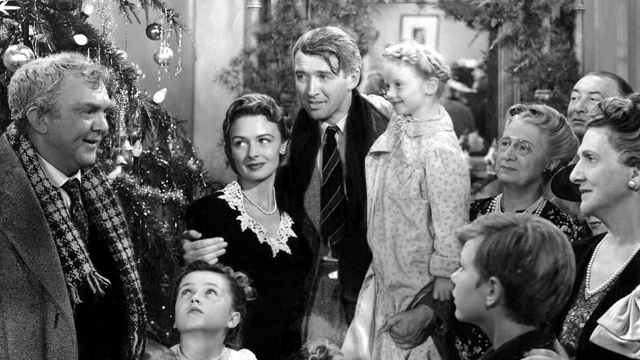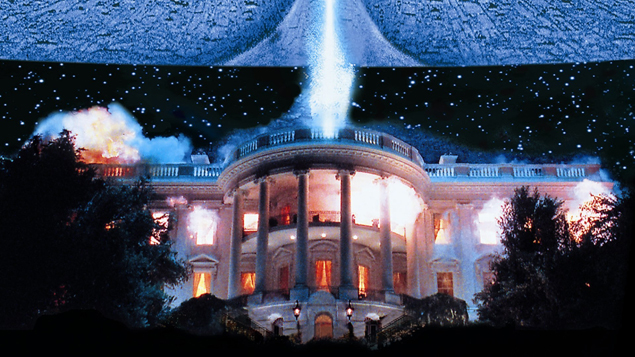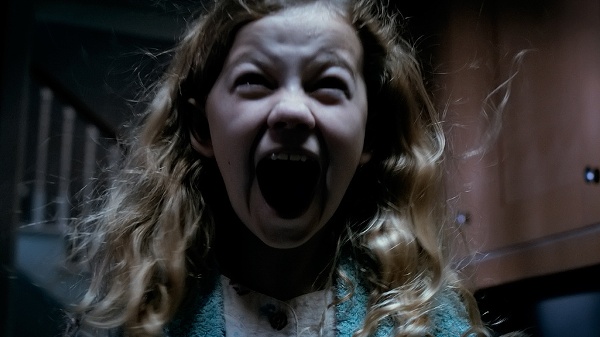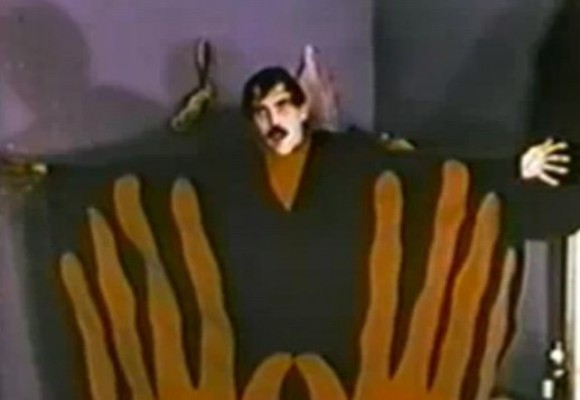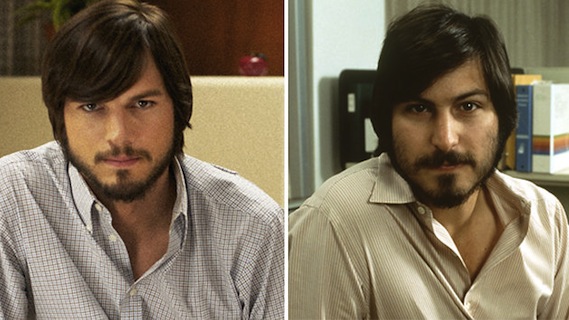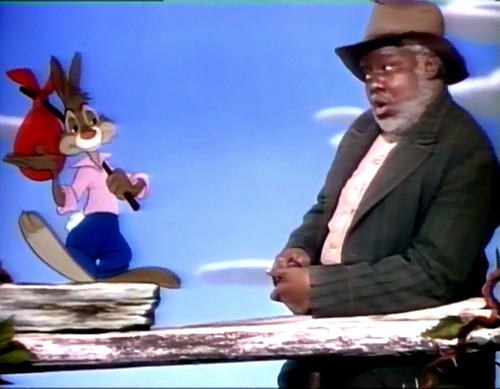A lot of work goes into making movies from many different departments, but what usually ends up defining the finished product more than anything is the quality of the actors performing in it. Whether we like it or not, the actors and actresses are what the audiences respond to the most; more than the script and the direction itself. Sure, writers and filmmakers can leave an impression and can build a reputation of their own, but their work is meant to be unseen and part of the illusion of reality. It is the actors who must be in front of the camera the whole time and be able to make you forget that you are watching something that was constructed for your entertainment. And this is mainly why we hold the acting profession in such high regard. Sure, anybody can get in front of the camera and act, but it does take real skill to make it feel authentic and true to life. Hollywood actors are an interesting lot because of the whole aura of celebrity that surrounds them. They are simultaneously the most beloved and most reviled people in the world, and this usually is a result of the work that they do. What I find fascinating is the way that a film actor’s career evolves over time, and how this affects the way we view them in the different roles they take. Some people come into fame unexpectedly and then there are others who work their way up. There are many ways to look at an actors career and it offers up many lessons on how someone can actually make an impact in the business depending on what they do as an actor.
The way we cast movies has certainly changed over the years. When the studio system was at it’s height in the 30’s and 40’s, actors were mandated to be under contract, meaning that they had to work for that studio exclusively. This became problematic whenever an actor or actress coveted a role that was being produced at a competing studio, excluding them from consideration. Actors also had little choice in what kinds of movies they made, mainly due to the studio bosses who would make those decisions for them. Many of these actors would end up being typecast in roles that the studios believed were the most profitable for them. It wasn’t until the establishment of the Screen Actors Guild that actors finally had the ability to dictate the parameters of their contract, and also to have more say in the direction of their careers. Even still, the pressure to be a successful matinee idol was a difficult thing to manage in Hollywood. In many ways, it was often better to be a character actor in these early years than a headliner. A character actor at this time may not have gotten the name recognition or the bigger paydays, but they would’ve gotten more diverse roles and a steadier flow of work of screen credits. Actors from this time like Peter Lorre, Walter Brennan, and Thelma Ritter enjoyed long lasting careers mainly because they made the most of their supporting roles and had more leeway in the directions of their careers.
It’s the status of a matinee idol that really makes or breaks an actor. Over the many years since the inception of cinema, we’ve seen actors rise and fall, and in some cases rise again. Making a career out of film acting is a difficult nut to crack, and seeing how the industry is sometimes very cruel to outdated actors, it’s any wonder why there are so many people who want to do it. I believe that it’s the allure of fame that drives many young up and comers to want to be actors, but following a dream does not an actor make. It takes hard work, just like any other field in entertainment. If I can give any advice to someone pursuing an acting career, it’s that you should never get into it just because you have the looks of a movie star. Do it because you like performing and being a part of the film-making process. Of course, it’s probably not my place to give advice to an actor, seeing as how I have not been on a stage since the eighth grade, and that I am looking at this from a writer’s point of view. But, from what I’ve observed in the film community, it is that the best actors out there are the ones who are really engaged in the process, and not the ones who are in it just to build up their image. The tricky part, however, is figuring out how to maintain this over time.
Becoming a successful actor in Hollywood has a downside that can be either a minor thing or a major negative thing depending on the person it happens to, and that’s the stigma of celebrity. Whether an actor seeks it out or not, by being out in front of the camera, they have exposed themselves to a public life. This isn’t a problem if the actor or actress manages their public and private lives well, but if they don’t, it’ll end up defining their careers more than the actual work that they do. Case in point, actor/director Mel Gibson. Mel’s career has been negatively impacted by his off-screen troubles, including a nasty break-up with his Russian girlfriend and an Anti-Semitic fueled rant during a drunk driving arrest. What’s most problematic for Mr. Gibson out of all this is the fact that no matter what he does now, no matter how good, it will always be overshadowed by his own bad behavior. And it is a shame because, in my opinion, he’s still a very solid actor. I still love Braveheart (1995) to death, and I think a lot of people are missing out if they haven’t seen his work in The Beaver (2011) yet. Or for that matter, his excellent direction in Apocalypto (2006). Unfortunately, all his hard work is for not as he continues to alienate more of his audience because of his off-screen behavior. This is the downside of celebrity that we see, and whether an actor is deserving of the scorn or not, it will always be a part of the business.
Actors and actresses can also find themselves in a rut simply because they are unable to adapt to the changing course of the industry. This is certainly the case with people who have created their own signature style of acting. Comedic actors in particular fall into this trap. I’ve noticed that some actors who breakthrough in comedies in certain decades will almost always loose their audience by the next. Shtick is a deceptive tool in the actor’s arsenal, because it helps people achieve stardom right away, but also anchors them down and keeps them stuck in place. We’ve seen this happen to many comedic stars, like Eddie Murphy and Mike Meyers and Jim Carrey; and it’s starting to become apparent in Sacha Baron Cohen’s post-Borat career. The only comedic actors who seem to make long lasting careers are the one’s who choose a dramatic role once in a while, like Bill Murray or Robin Williams. Age also plays a factor in the downfall of people’s careers. It usually happens with child actors who can’t shake off their youthful image, and unfortunately diminish and disappear once they become adults. Making that transition from child actor to adult actor is tough, and it’s what usually separates the Elijah Woods from the Macaulay Culkins. It’s less difficult nowadays for elderly actors to loose their careers than it was many years ago, mainly because movies like Nebraska (2013) give older actors much better roles. But, in the past, the industry was incredibly cruel to older actors; something highlighted brilliantly in Billy Wilder’s classic Sunset Boulevard (1950).
What usually ends up making an actor or actresses’ career survive is their ability to grow as a performer. There’s something to the old adage of there being “no role too small.” Actors should relish the opportunity to diversify their choices of roles. And usually the ones who have the longest lasting careers are the people who can play just about anything. Meryl Streep is considered the greatest actress of her generation, and she didn’t do it by playing the same kind of character over and over again. She has done comedies, dramas, cartoons; she has played Austrians, Australians, teachers, mothers, daughters, grandmothers, you name it. No one would ever consider her lazy. She has made a living challenging herself as an actor, and while not every role of her’s works (Mama Mia, for example) she nevertheless commands respect for her efforts. What I respect the most is the ability of an actor or actress to move effortlessly from genre to genre and still act like it’s a role worthy of their talents. That’s why I admire actors like Christian Bale, who can go from dark and twisted roles like The Machinist (2004) to playing Batman, or Amy Adams who can appear in movies as diverse as Paul Thomas Anderson’s The Master (2012) and The Muppets (2011) and give each film her best effort. It’s always refreshing to see actors who commit themselves to any role they get, which in turn helps to endear them to us as an audience. An invested actor will almost always make a film better.
Usually nowadays a bad performance is not measured by how misplaced an actor is or by how out of their league they may be. The worst kinds of performances come from actors who are just lazy. At the point where an actor just works for the paycheck and nothing more is usually where their careers begin to decline. We’ve seen this with many actors who just get too comfortable doing the same role over and over again, or with people who take a job just for the pay and act like the part is beneath them. When this happens, it’s usually driven by ego, which is another negative by-product of celebrity. When an actor begins to dictate the terms of their comfort level in the production, rather than try to challenge themselves as a performer, it will usually mean that they’ll put in a lackluster performance, which leads them towards becoming a one-note performer. This sometimes happens to people who hit it big and then become afraid of alienating this new audience they’ve built. Johnny Depp is an actor that I think has reached this point, having built a wide fan-base from his Pirates of the Caribbean films. The once ground-breaking actor has now fallen victim to his own shtick and that has negatively impacted his recent slate of films like The Lone Ranger (2013), which shows what happens when you try to play things too safe.
It is remarkable when you see these changes in a film actor’s career, because they usually happen unexpectedly. Overall, the actor is the one responsible for their own career path, but the market itself can be a wild card factor in the lives of these people. I for one value the efforts of a strong actor who’ll continue to try hard, even when the roles stop being what they are used to. It’s something of a miracle to see actors who continue to stay relevant year after year, like Tom Hanks or Sandra Bullock. They’ve locked into a career path that seems to have worked for them and have managed to maintain they’re faithful audiences even when they take on more challenging roles. What is also interesting is how Hollywood values a redemption story when it comes to an actor’s career. A Hollywood comeback always manages to be a positive thing in the industry, especially when it happens to the least expected people; like with Robert Downey Jr. bouncing back from his drug addiction to play Iron Man, or Mickey Rourke pulling himself out of B-movie hell when he made The Wrestler (2008). Film acting careers are probably the least predictable in the industry and it takes someone with a lot of personal resilience to make it work. If there is anything an up and coming film actor should learn is that hard work pays off. Don’t fall victim to concerning yourself over the changing trends or acting out of your comfort zone. In the end, the best thing you can do is to commit to the role, no matter what it is. Like the great George Burns once said, “Acting is all about sincerity. And if you can fake that, then you’ve got it made.”

